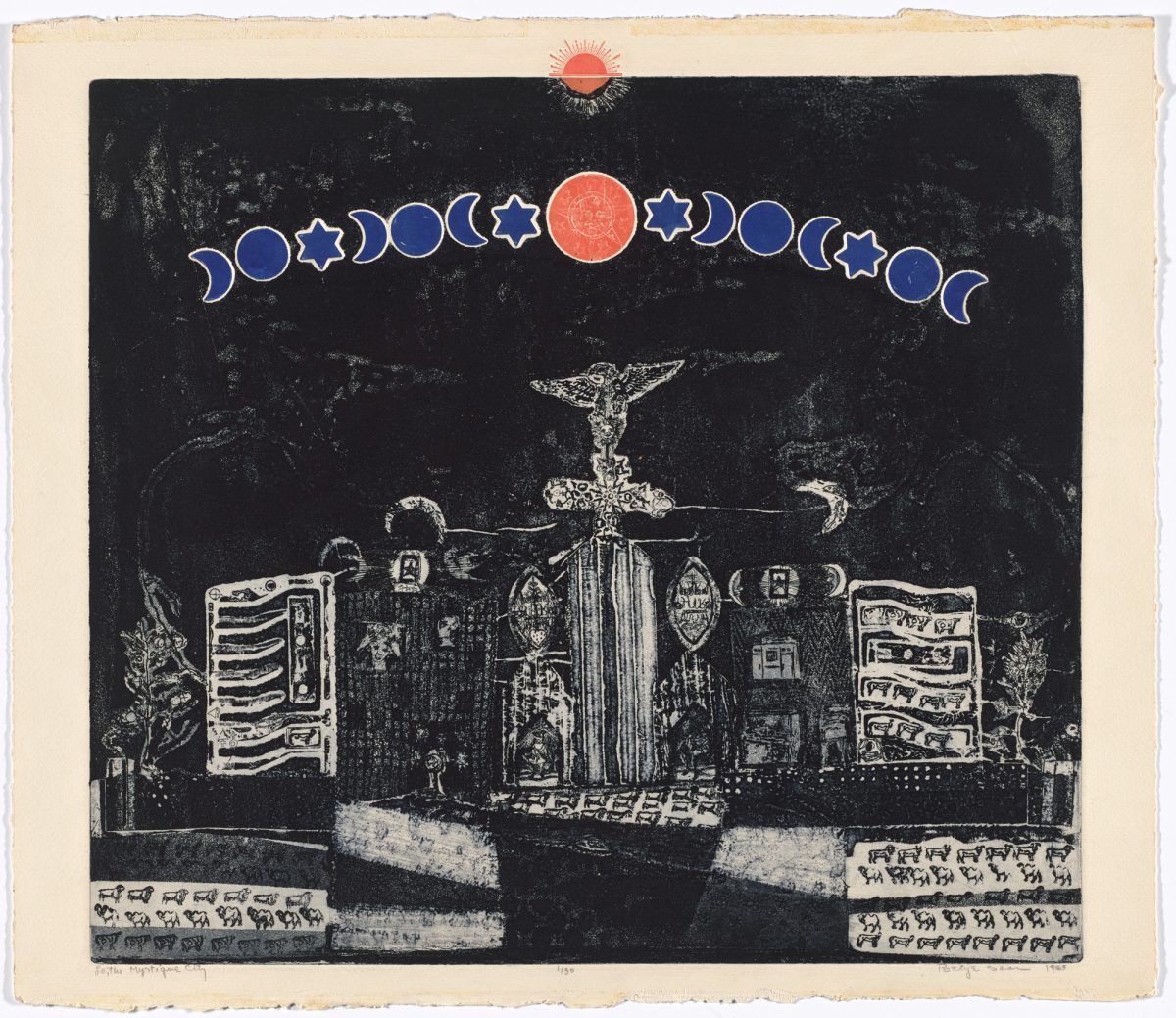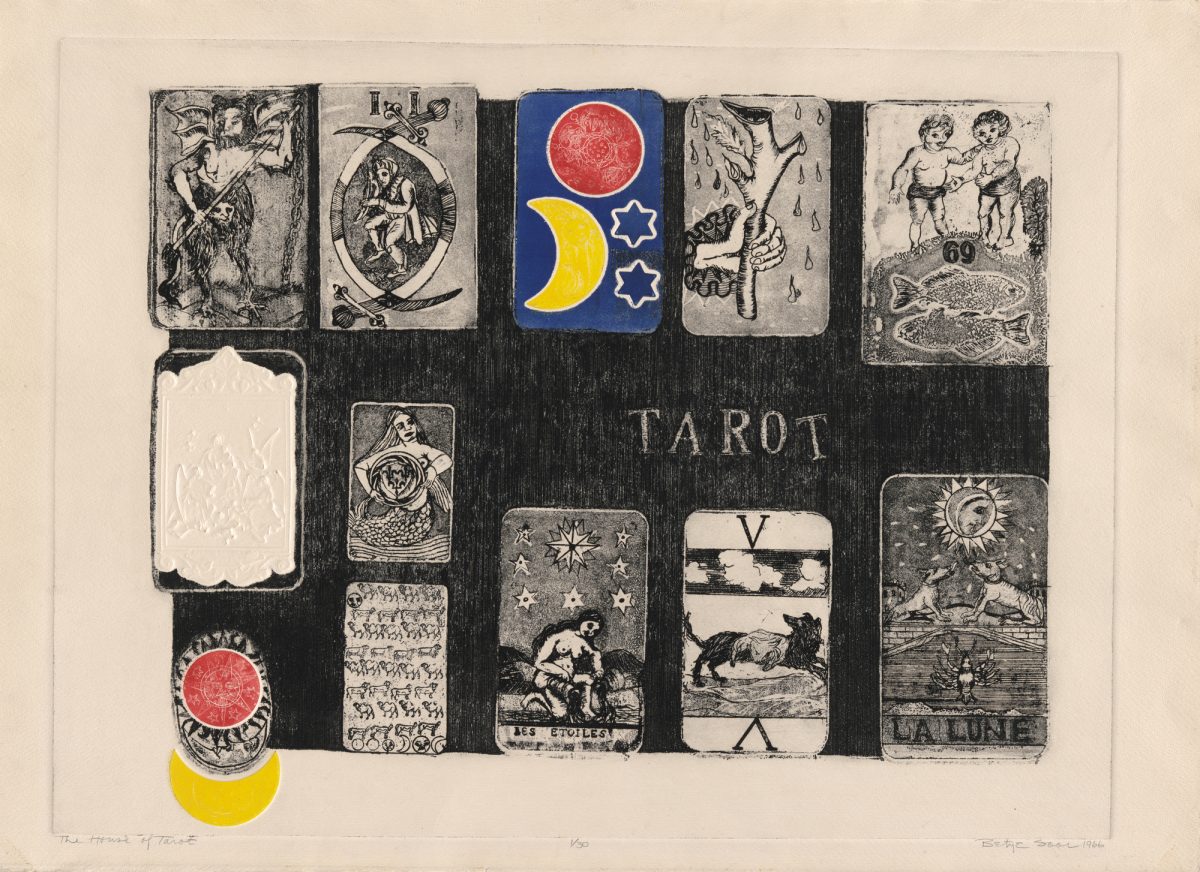
Betye Saar “The Legends of Black Girl’s Window”
MoMA
Through January 4, 2020
African American artist Betye Saar is celebrated with an examination of her early work as a printmaker in exhibition The Legends of Black Girl’s Window, one of a few select other exhibits that are part of MoMA’s Fall 2019 opening season. After nearly a decade of focused work in printmaking, artist Betye Saar created her autobiographical assemblage Black Girl’s Window in 1969. Forty-two of her early works on paper from the ’60s and early ’70s are on display until January 4th, 2020, portraying topics such as racism, mysticism, spirituality, family, life, and death that are often at the core of her work.
Saar became interested in printmaking while studying design at UCLA. Her venture into fine arts was unusual at the time, given the prevalence of racism and sexism in universities, which prevented women from feeling confident in identifying as an artist. She uses the soft-ground etching technique, which allows an artist to create a print that has linework as detailed as a pencil drawing might be. This technique became an artistic language for her that she could use to convey messages about what she was curious about, what she felt about current events and family matters, and became a way for her to interpret the unexplainable.

Saar likes to include a conglomeration of random objects in her pieces to show how seemingly pointless things can be reclaimed to demonstrate their artistic power. In one piece in Black Girl’s Window, “Black Crows in the White Section Only,” she uses a paneled window to show off old advertisements that portray black men in a derogatory way. The ads show products and images that were meant to keep black people enslaved, and Saar uses this to show how deeply ingrained racism is in our society, and how she feels about it.
Besides cultural issues such as racism, Saar tackles the unknown, the magic and mysterious with prints of tarot cards, phrenology maps that represent what you think and dream about, sky charts showing zodiac signs, and etchings of palm prints. To a viewer who is not familiar with Saar’s work, it may seem as if the topics covered are disconnected, and the exhibit is a way to show the different complexities of the artist’s brain. This is not the case. In a 1989 interview, Saar insisted she can no longer “separate the work by saying this [work] deals with the occult, and this deals with shamanism, or this deals with so and so…. It’s all together and it’s just my work.” Those who visit the exhibit can expect to see how time moves cyclically. History is bound to repeat itself, and emotions are passed down from generation to generation. Knowledge is the only thing we consistently reinvent over time. Saar uses this notion to manipulate the themes, images, and objects to which she’s committed.

Perhaps the most haunting print in the collection is “Keep for Old Memoirs,” which includes photographs of her great aunt, a pair of her gloves, and a note. Saar explains that she’s a child of the depression, so she doesn’t ever throw anything away in case it becomes useful later. This printed fabric piece shows how family history has influenced Saar’s artistic direction, and how important it can be to hold onto things that may not seem important at the moment you discover them.
This exhibit is on display on the second floor of the MoMA. Find tickets on their website. For more information on Betye Saar’s artistic practice and ways to interpret her prints, check out the MoMA calendar for all of the events related to this revolutionary artist.



